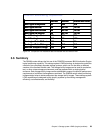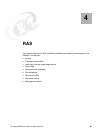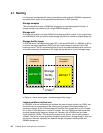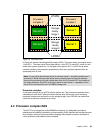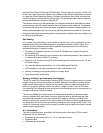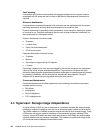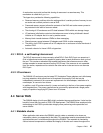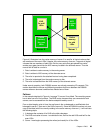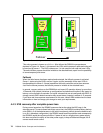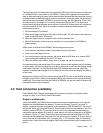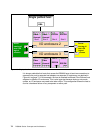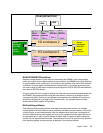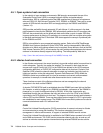Chapter 4. RAS 67
A mechanism must exist to allow this sharing of resources in a seamless way. This
mechanism is called the
hypervisor.
The hypervisor provides the following capabilities:
Reserved memory partitions allow the setting aside of a certain portion of memory to use
as cache and a certain portion to use as NVS.
Preserved memory support allows the contents of the NVS and cache memory areas to
be protected in the event of a server reboot.
The sharing of I/O enclosures and I/O slots between LPARs within one storage image.
I/O enclosure initialization control so that when one server is being initialized it doesn’t
initialize an I/O adapter that is in use by another server.
Memory block transfer between LPARs to allow messaging.
Shared memory space between I/O adapters and LPARs to allow messaging.
The ability of an LPAR to power off an I/O adapter slot or enclosure or force the reboot of
another LPAR.
Automatic reboot of a frozen LPAR or hypervisor.
4.3.1 RIO-G - a self-healing interconnect
The RIO-G interconnect is also commonly called RIO-2. Each RIO-G port can operate at 1
GHz in bidirectional mode and is capable of passing data in each direction on each cycle of
the port. This creates a redundant high-speed interconnect that allows servers on either
storage complex to access resources on any RIO-G loop. If the resource is not accessible
from one server, requests can be routed to the other server to be sent out on an alternate
RIO-G port.
4.3.2 I/O enclosure
The DS8000 I/O enclosures use hot-swap PCI-X adapters These adapters are in blind-swap
hot-plug cassettes, which allow them to be replaced concurrently. Each slot can be
independently powered off for concurrent replacement of a failed adapter, installation of a
new adapter, or removal of an old one.
In addition, each I/O enclosure has N+1 power and cooling in the form of two power supplies
with integrated fans. The power supplies can be concurrently replaced and a single power
supply is capable of supplying DC power to an I/O drawer.
4.4 Server RAS
The DS8000 design is built upon IBM’s highly redundant storage architecture. It also has the
benefit of more than five years of ESS 2105 development. The DS8000 thus employs similar
methodology to the ESS to provide data integrity when performing write operations and
server failover.
4.4.1 Metadata checks
When application data enters the DS8000, special codes or metadata, also known as
redundancy checks, are appended to that data. This metadata remains associated with the
application data as it is transferred throughout the DS8000. The metadata is checked by
various internal components to validate the integrity of the data as it moves throughout the



